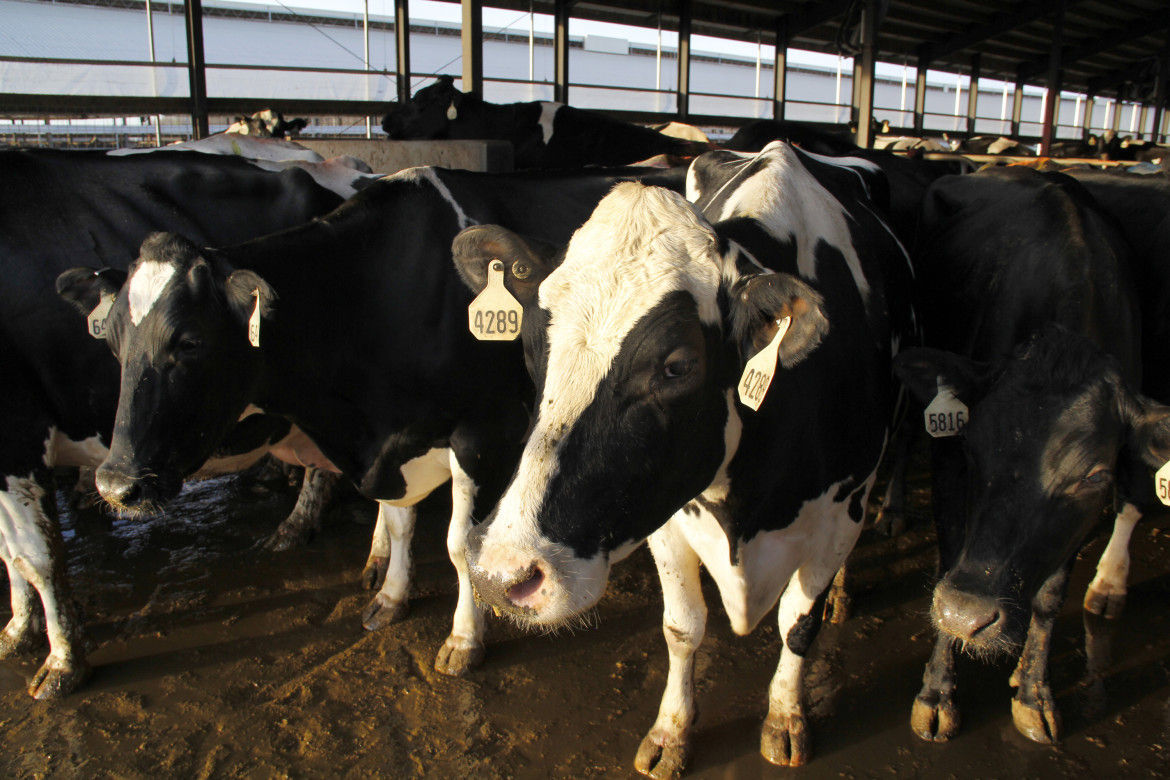Wisconsin State Journal: Property values drop near large CAFOs, state says

A state study found lower property values near large dairy feedlots.
Kate Golden / Wisconsin Center for Investigative Journalism
by STEVEN VERBURG | November 16, 2017
The Wisconsin Department of Revenue has found that homes near large dairy operations have been selling for as much as 13 percent below their assessed value in Kewaunee County, where odor, noise and water pollution from the sprawling feedlots have been a big problem.
A department study concluded that assessments could be reduced by 8 percent to 13 percent for homes within a mile of the county’s six largest Concentrated Animal Feeding Operations (CAFOs), and that reductions may also be appropriate in nearby counties with similar conditions.
The study was conducted after a town of Pierce couple appealed their assessment. It was the first time a homeowner has appealed to the state with the argument that a CAFO had lowered a property’s value, department spokesman Patty Mayers said Thursday.
The Kewaunee County homeowners said they were glad their taxes would be reduced, but they were stuck with a far worse problem — the CAFO across the road.
“We would much prefer to have our home value back, be able to breathe the air and drink the water without wondering what contaminants they contain,” Scott and Deb Kliment said in a statement. “We would like to be able to enjoy our beautiful property without the sometimes unbearable stench (and) sleep with the windows open without constant 24-7 noise (from) 80,000 pound manure trucks.”
A Wisconsin Dairy Business Association spokesman said he wouldn’t comment because he hadn’t seen the Department of Revenue report.
Kewaunee County, south of Green Bay, is home to 14 of the state’s nearly 300 CAFOs, which are defined as having at least 715 cows. Many dairy CAFOs have more cows than that, and the animals generate millions of gallons of manure.
The manure, which is spread on farm fields, has been a particular problem in places like Kewaunee County, where shallow, fractured bedrock allows contaminants to slip quickly into the aquifer people use for drinking water.
Other northeastern Wisconsin counties — Brown, Door, Calumet and Manitowoc — also have large dairy operations built atop vulnerable groundwater. And like Kewaunee County, they are seeing increasing problems with contaminated well water.
To the west, the aquifer below Wisconsin’s Central Sands region is also vulnerable, so it’s not unlikely studies would find homes there, too, are selling for less around large dairies, said Paul Kent, an attorney representing the town of Saratoga in its challenge to a CAFO proposal.
“It’s inevitable that property values would be affected,” Kent said. “While it may not be applicable statewide, it may be applicable in areas of the state where you have pathways for groundwater to be affected or for odors to impact residents where they haven’t been in contact with that before.”
The Department of Revenue study is an indication of the way CAFOs affect nearby residents, and why local government authority to regulate CAFOs should be restored, Kent said. A series of state laws have placed most of that authority with the state.
The study examined 184 sales of properties that took place over the past three years near Kewaunee County’s six largest CAFOs and one other CAFO just over the county line in Brown County. Each CAFO was permitted for at least 2,860 cows.
The department said an initial review of residential sales in all Kewaunee County towns was inconclusive.
The sales took place around Kinnard Farms, Pagels Ponderosa Dairy, Dairy Dreams, Ebert Dairy Enterprises and Wakker Dairy Farm in Kewaunee County and Dairyland Farm in Brown County. The Kliments live across from Ebert, which has a 2015 Department of Natural Resources permit for 4,881 cows. The owners have projected an increase to 6,179 cows.
Nancy Utesch, who operates a small beef farm and is active in the advocacy group Kewaunee Cares, said the study’s results don’t capture the reality of life in a county where more than 30 percent of tested wells have been tainted by pathogens associated with animal waste.
Smaller CAFOs are also having harmful impacts, the harm extends beyond a mile from each operation, and other home values have probably been reduced even more than the study estimated, Utesch said.
“The Kliments did not have a contaminated well or any other extenuating circumstances,” Utesch said. “All you have to do is exist in this radius and you are losing property values … Industrial agribusiness is externalizing its costs on to the taxpayers.”
Mayers, the revenue department spokeswoman, said the study was tailored to resolve the Kliments’ appeal, and other challenges could yield different results.